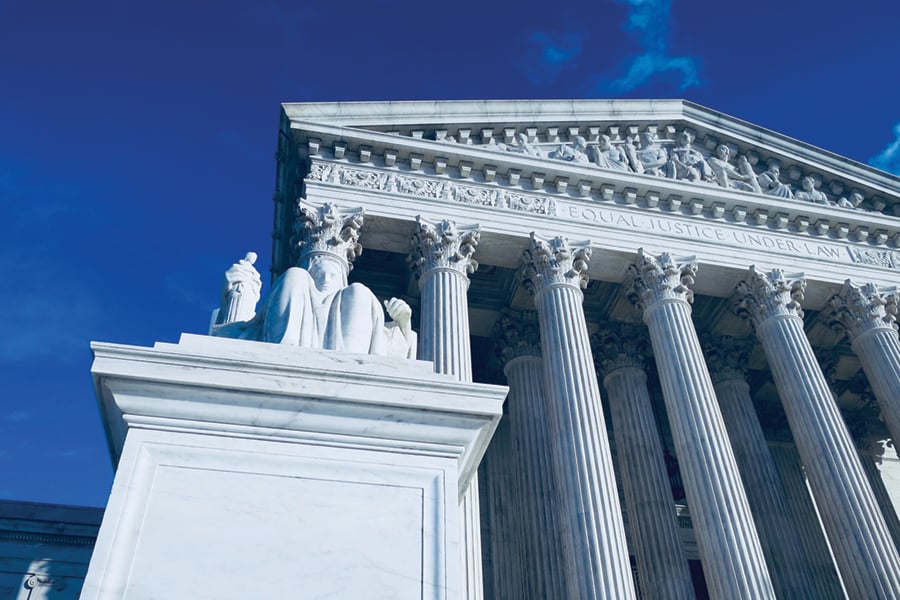

A panel of appellate judges has reignited a lawsuit over the DOL’s ESG rule, an early sign of the effects a recent Supreme Court decision on regulatory agencies’ authority may have.
Late last week, the United States Court of Appeals for the Fifth Circuit ordered a district court to reevaluate its decision to uphold the Department of Labor’s rule “Prudence and Loyalty in Selecting Plan Investments and Exercising Shareholder Rights.” That followed a decision by the Supreme Court that overturned what is known as the Chevron deference, a 40-year-old principle that granted federal agencies latitude in crafting regulations based on vague laws passed by Congress.
That decision could make it easier for plaintiffs to challenge regulators over rules that they say exceed the regulatory authority granted by lawmakers, and it is expected that the government will be slower and more careful in drafting any new regulations.
In regard to how the DOL has determined retirement plan fiduciaries can or should consider environmental, social, and governance factors when selecting investments, the appellate court noted that the agency’s stance has changed across presidential administrations. While a similar Trump-era rule did not forbid considerations on ESG factors – except for a plan’s default investments – the Biden-era rule is more permissive in allowing fiduciaries to use ESG information.
“This case, while featuring two administrations’ ping-ponging directives, turns fundamentally on the words that Congress chose: What investment duties does ERISA prescribe and proscribe for plan fiduciaries? In upholding the Department of Labor’s reading, the district court relied upon the decades-old Chevron deference doctrine,” the appellate court judges wrote. “Given the upended legal landscape, and our status as a court of review, not first view, we vacate and remand so that the district court can reassess the merits.”
Whether the district court will reach a different conclusion in the case is unknown, but it’s likely that other recent rules will be affected, such as the DOL’s new rule defining employees versus independent contractors and the Federal Trade Commission’s rule on noncompete agreements, said Craig Leen, a partner at K&L Gates. The DOL's fiduciary rule could also be a prime target for opponents who could cite the change in Chevron.
“The elimination of Chevron would likely impact every pending rule,” said Leen, who served as director of the DOL’s Office of Federal Contract Compliance Programs during the Trump administration.
In the challenge to the DOL’s ESG rule, which was brought by 26 states, neither the plaintiffs nor defendant relied on the Chevron deference in their recent arguments – something the appellate court noted. However, the district court’s opinion to uphold the rule did include an analysis of the agency’s authority based on the Chevron doctrine, Leen said.
“ERISA doesn’t specifically mention ESG factors. It says you’re supposed to maximize the rate of return [for participants],” he said. “To some extent, DOL was relying on an expansive view of ERISA.”
The Supreme Court has been pushing back on the authority of regulators in recent years, Leen noted, invoking the “major questions doctrine,” which it has used to overturn rules and regulations drafted by career public servants. For example, that included a decision two years ago that constrained the Environmental Protection Agency’s ability to address climate change.
The sustainable investing world, which widely supported the DOL’s ESG rule, is watching the case closely.
“The district court decision was quite straightforward in that [the DOL’s new rule] was substantially similar to the Trump-era rule,” said Bryan McGannon, managing director at US SIF: The Sustainable Investment Forum.
“The bigger impact is on regulations looking forward. The regulatory process will be slow and incredibly deliberate to avoid any litigation derived from this Chevron decision.”

Canadian stocks are on a roll in 2025 as the country prepares to name a new Prime Minister.

Two C-level leaders reveal the new time-saving tools they've implemented and what advisors are doing with their newly freed-up hours.

The RIA led by Merrill Lynch veteran John Thiel is helping its advisors take part in the growing trend toward fee-based annuities.

Driven by robust transaction activity amid market turbulence and increased focus on billion-dollar plus targets, Echelon Partners expects another all-time high in 2025.

The looming threat of federal funding cuts to state and local governments has lawmakers weighing a levy that was phased out in 1981.
RIAs face rising regulatory pressure in 2025. Forward-looking firms are responding with embedded technology, not more paperwork.
As inheritances are set to reshape client portfolios and next-gen heirs demand digital-first experiences, firms are retooling their wealth tech stacks and succession models in real time.
